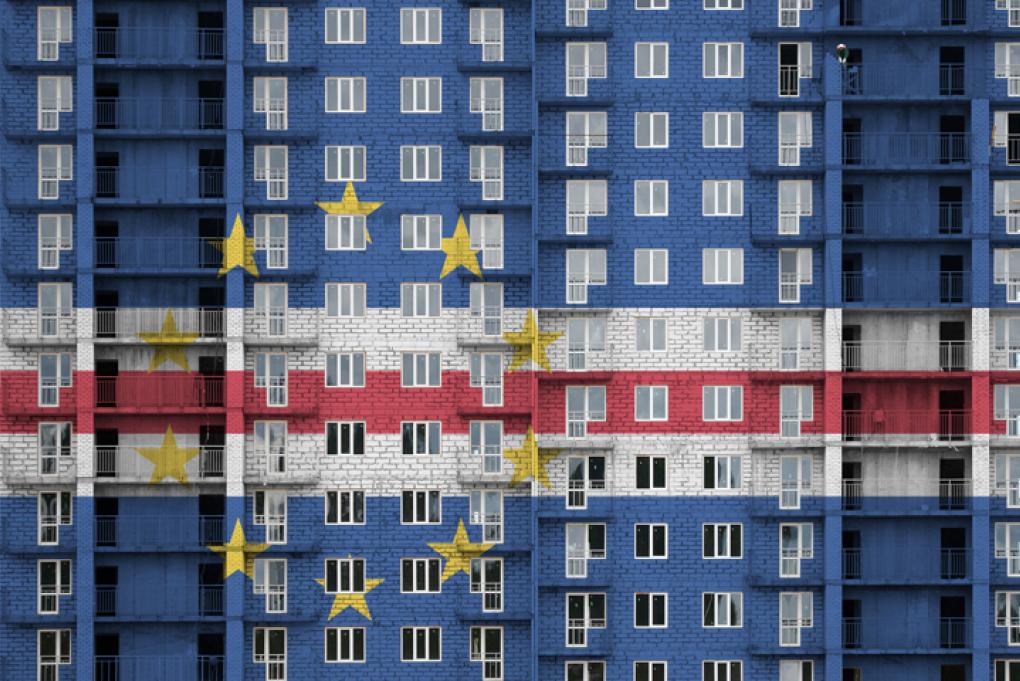Portuguese real estate market: weathering the storm
In the midst of the storm sparked by the pandemic, the real estate market has maintained a positive tone. Although the heightened uncertainty and the restrictions led to the postponement of home purchase decisions, prices decelerated only slightly and still rose by around 8% in 2020.

- In the midst of the storm sparked by the pandemic, the real estate market has maintained a positive tone. Although the heightened uncertainty and the restrictions led to the postponement of home purchase decisions, prices decelerated only slightly and still rose by around 8% in 2020.
- There is typically a lag between GDP movements and the real estate market, so the sector can be expected to cool down somewhat more in 2021. However, this will be a temporary moderation. The Next Generation EU funds will play an important role in boosting the real estate market.
In 2020, 171,800 homes were sold, some 10,000 fewer than in 2019. Practically all of this reduction was concentrated in Q2, which was marked by a strict lockdown that lasted 45 days. Thus, whilst in the first half of the year there were 9,500 fewer home sales than in the same period of the previous year, in the second half of the year the sector resumed its activity and the number of transactions equalled that of the previous year.
The market’s resilience was also visible in the trend in prices. In 2020, they rose by 8.4%, just 1.2 pps less than in 2019, providing continuity to the slowdown in growth following the peak reached in 2018.
The reduction in the number of sales was concentrated among second-hand homes, whilst sales of new homes remained virtually stable. This led to a more marked slowdown in price growth in the second-hand segment, at 8.7% (1.4 pps lower than in 2019), whilst the prices of new homes (+7.4%) slowed by just 2 decimal points compared to 2019.

The market’s resilience partly reflects a lag that is common between movements in the wider economy and in the real estate market, as well as the measures implemented to mitigate the impact of the pandemic, which prevented a sharp reduction in both unemployment and household incomes. In fact, the unemployment rate increased by just 3 decimal points, up to 6.8%, while households’ disposable income grew by 1% over the year as a whole.1 Moratoria, meanwhile, have given households a respite and prevented forced sales: in 2020 they affected 17.8% of home purchase loans and 14.2% of debtors with housing credit. Moreover, the demand for housing has been supported by accommodative financial conditions. Finally, the postponements of the end of the Golden Visa scheme also provided the market some relief.2 Despite the mobility restrictions, in 2020 slightly more than 1,000 visas were granted for investments which totalled around 590 million euros (equivalent to 2.2% of the value of all property sales in 2020).
On the supply side, housing supply continued to grow in 2020 and helped to ease price pressures. In fact, the construction sector was the only one that managed to register growth in its activity in 2020 (+3.2%). The completion of new homes slowed, but continued to grow at above 20%. However, the granting of new construction permits slowed in 2020 (+3.2%, well below the 19% of 2019), suggesting a future moderation in the pace of residential construction.
For 2021 to date, the information available is still very limited and may be skewed by the strict lockdown imposed between mid-January and mid-March. However, the available data suggest slightly less buoyancy in the real estate market, in terms of both prices and sales. According to data from Confidencial Imobiliário, prices showed a significant slowdown in the first two months of the year, rising at a year-on-year rate of 2.7% in February (versus growth rates of around 5% at the end of 2020). Valuations, meanwhile, show a more moderate slowdown, going from 6% year-on-year growth at the end of 2020 to 5.7% in February.
Following this start to the year in which demand was restricted by the lockdown, there may well be a certain recovery in sales over the coming months. However, we expect sales will suffer a slight setback in the year as a whole, which would contribute to a slowdown in prices. This forecast will largely depend on developments in the measures implemented to support economic activity in the face of the pandemic. In particular, much will depend on the rise in unemployment and the consequent loss of household incomes as the employment support measures are withdrawn and credit moratoria come to an end, although demand will continue to benefit from accommodative financial conditions anchored by the ECB’s monetary policy.
On the other hand, prices could also decelerate due to a reduced presence of non-residents and the weakness that will continue to affect tourism (a sector that has provided a major boost to the housing market in recent years).3 In addition to these factors, the lower rate of permits being granted for new builds suggests that could be a slowdown in the rate at which new homes enter the market, which would moderate the slowdown in prices.
All in all, we expect the blip in the real estate sector to be temporary. Control of the pandemic will allow for a sustained recovery of Portugal’s economic activity over the coming quarters. In addition, the funds that Portugal is set to receive through the Next Generation EU programme can be expected to provide a boost to the real estate market (remember that the EU has indicated that the renovation of buildings is a priority for the ecological transition), both by boosting residential construction and through the refurbishment of existing properties.
- 1. The increase in disposable income is essentially due to the measures introduced to support households in the face of the COVID-19 crisis, and also reflects the increase in public sector wages and the national minimum wage.
- 2. The Golden Visa scheme (under which residence permits are granted to non-residents for investing in Portugal) was due to come to an end in Lisbon, Porto and the Algarve, but this was postponed until 31 December.
- 3. According to the Associação do Alojamento Local em Portugal (the association for local accommodation in Portugal), between 10% and 15% of owners of holiday rental properties in Lisbon and Porto have switched to using these properties for long-term rentals. The Portuguese tourism board also indicates that the number of registered tourist accommodations fell by 50% in 2020.
The Recovery and Resilience Plan which Portugal presented to the EU in relation to Next Generation EU foresees allocating 2.2 billion euros of the grants to renovating buildings and improving energy efficiency (i.e. around 15% of the total subsidies). These funds will also help to support 26,000 households with housing deficiencies.4
In the energy efficiency sphere, Portugal faces major challenges. 82% of residential buildings (some 3.3 million buildings) were built before 19905 and have a low energy efficiency rating.6 In addition, the Energy and Climate Plan for Portugal identified investment needs on the order of 6 billion euros in order for energy neutrality to be achieved by 2050.
At the same time, 26,000 households in Portugal are identified as having housing deficiencies. Helping these 26,000 households in the 2021-2026 time frame would require building or renovating slightly over 4,000 homes a year (in 2020 17,260 homes were built in Portugal).
- 4. Result of the study of the number of households with housing deficiencies carried out by the Institute of Housing and Urban Rehabilitation in 2018.
- 5. European Investment Bank (2020). «The potential for investment in energy efficiency through financial instruments in the European Union. Portugal in-depth analysis». May.
- 6. The IMF, in the publication «Sectoral Policies for Climate Change Mitigation in the EU, 2020», states that around 70% of homes in Portugal have an energy certificate with a rating of D or below (on a scale ranging from A [maximum] to E [minimum]).
- 1. The increase in disposable income is essentially due to the measures introduced to support households in the face of the COVID-19 crisis, and also reflects the increase in public sector wages and the national minimum wage.
- 2. The Golden Visa scheme (under which residence permits are granted to non-residents for investing in Portugal) was due to come to an end in Lisbon, Porto and the Algarve, but this was postponed until 31 December.
- 3. According to the Associação do Alojamento Local em Portugal (the association for local accommodation in Portugal), between 10% and 15% of owners of holiday rental properties in Lisbon and Porto have switched to using these properties for long-term rentals. The Portuguese tourism board also indicates that the number of registered tourist accommodations fell by 50% in 2020.
- 4. Result of the study of the number of households with housing deficiencies carried out by the Institute of Housing and Urban Rehabilitation in 2018.
- 5. European Investment Bank (2020). «The potential for investment in energy efficiency through financial instruments in the European Union. Portugal in-depth analysis». May.
- 6. The IMF, in the publication «Sectoral Policies for Climate Change Mitigation in the EU, 2020», states that around 70% of homes in Portugal have an energy certificate with a rating of D or below (on a scale ranging from A [maximum] to E [minimum]).


